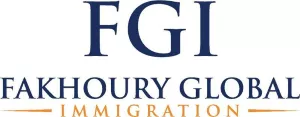On Friday, July 31, 2020, the U.S. Citizenship and Immigration Services (USCIS) announced an increase in the filing fees for various application and petition forms the public use to apply for immigration benefits. Initially proposed in November 2019, the new USCIS filing fees will go into effect on October 2, 2020, and broadly constitute a 20% increase over the current USCIS filing fees. The new USCIS filing fee schedule was published on August 3, 2020 and is available for review on the Federal Register's website at the following address: https://www.govinfo.gov/content/pkg/FR-2020-08-03/pdf/2020-16389.pdf. This writing will only provide information as to how the new USCIS filing fee schedule will impact U.S. employers on or after October 2, 2020.
Filing Fee Changes
While most USCIS filing fees for applications and petitions will increase on October 2, 2020, there are a few filing fees that have decreased under the new USCIS fee schedule. Here is a list of filing fee changes for some of the main employment-based petition and application forms:
|
Immigration Benefit Request |
Current Fee |
Final Fee |
Change |
Percent Change |
|
Form I-129 (Petition for a Nonimmigrant Worker (H-1B; H-1B1) |
$460.00 |
$555.00 |
$95.00 |
21% |
|
Form I-129 (Petition for a Nonimmigrant Worker) (L-1) |
$460.00 |
$805.00 |
$345.00 |
75% |
|
Form I-129 (Petition for a Nonimmigrant Worker) (TN) |
$460.00 |
$695.00 |
$235.00 |
51% |
|
Form I-129 (Petition for a Nonimmigrant Worker) (E-1; E-2; or E-3) |
$460.00 |
$695.00 |
$235.00 |
51% |
|
Form I-129 (Petition for a Nonimmigrant Worker) (H-2B) |
$460.00 |
$715.00 |
$255.00 |
55% |
|
Form I-140 (Immigrant Petition for Alien Worker) |
$700.00 |
$555.00 |
-$145.00 |
-21% |
|
Form I-485 (Application to Register Permanent Resident or Adjust Status) |
$1,140.00 |
$1,130.00 |
-$10.00 |
-1% |
|
Form I-131 (Application for Travel Document) |
$575.00 |
$590.00 |
$15.00 |
3% |
|
Form I-765 (Application for Employment Authorization) |
$410.00 |
$550.00 |
$140.00 |
34% |
|
Form I-539 (Application to Extend/Change Nonimmigrant Status) - paper filing |
$370.00 |
$400.00 |
$30.00 |
8% |
|
Form I-824 (Application for Action on an Approved Application or Petition) |
$465.00 |
$495.00 |
$30.00 |
6% |
|
Form I-290B (Notice of Appeal or Motion) |
$675.00 |
$700.00 |
$25.00 |
4% |
|
Biometric Service |
$85.00 |
$30.00 |
$55.00 |
-65% |
Petition and Application Form Changes
In addition to the increase in the filing fees, the USCIS has indicated that it will revise some of its petition and application forms thirty (30) days before the new filing fee schedule takes effect.1 Two of the forms that USCIS has indicated will be revised are the following:
- Form I-129 (Petition for a Nonimmigrant Worker); and
- Form I-765 (Application for Employment Authorization).
These new forms must be used when the new filing fees take effect on October 2, 2020.2
Premium Processing Changes
The new filing fee rule will also change how premium processing service is provided by the government, as follows:
- USCIS Premium Processing Service Will Take Longer: The final rule increases the timeframe USCIS examiners have to adjudicate a petition from 15 calendar days to 15 business days.
- USICS Premium Processing Fee May Be Increased Annually: The final rule also has a provision that allows the USCIS to increase the premium processing filing fee at its discretion without the need for review under the rule-making process.
New Interpretation by USCIS of PL 113-114 filing fee
The new filing fee rule changes when the PL 113-114 filing fee is applicable as follows:
- PL 113-114 Fee to Apply to Initial H-1B and L-1 Filings and H-1B and L-1 Extension of Stay Filings: U.S. employers that employ 50 or more workers with 50% or more of their workers in the U.S. in H-1B or L-1 status are currently required to pay an extra filing fee of $4,000.00 (H-1B) or $4,500.00 (L-1) when filing an initial H-1B or L-1 petition. The new filing fee rule now requires the PL 113-114 filing fee to be paid not only at the time of the initial H-1B or L-1 petition filing for the foreign national, but now requires this filing fee to be paid when the U.S. employer is subsequently extending the status of the foreign national. This change in the interpretation of the language contained in PL 113-114 by USCIS to now require the PL 113-114 filling fee to be paid when extending the stay of the foreign national is a significant cost increase for U.S. employers that rely heavily on the H-1B and L-1 programs. It is anticipated that this provision of the final filing fee rule will be challenged through some type of litigation.
Conclusion
U.S. employers will likely move forward quickly with petition and application filings between now and October 2, 2020 to avoid paying the higher filing fees. U.S. employers that select premium processing service will also need to plan for longer processing by USCIS in the future. U.S. employers would want to check the expiration dates of their workers in H-1B or L-1 status in the U.S., who expire before March 31, 2020, and file any extension of stay petitions before October 2, 2020 in order to avoid paying the additional $4,000.00 (H-1B) or $4,500.00 (L-1) PL 113-114 filing fee. In addition, with the USCIS recently conducting a second lottery for H-1B registrations for Fiscal Year (FY) 2021, because it did not receive enough H-1B cap petition filings, U.S. employers who have had their H-1B registrations recently selected in this second lottery round would want to quickly move forward and file an H-1B cap petition for the H-1B worker for an October 1, 2020 start date before the new H-1B filing fee and new Form I-129 petition form take effect. U.S. employers may also need to budget more money after October 2, 2020, if interested in sponsoring foreign nationals for the H-1B and L-1 categories.
Footnotes
2. https://www.aila.org/File/Related/20073100b.pdf
The content of this article is intended to provide a general guide to the subject matter. Specialist advice should be sought about your specific circumstances.

